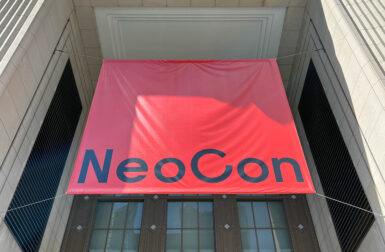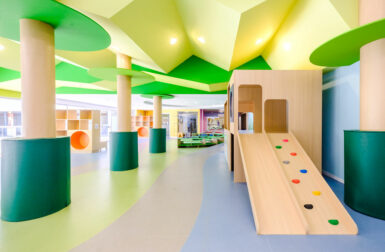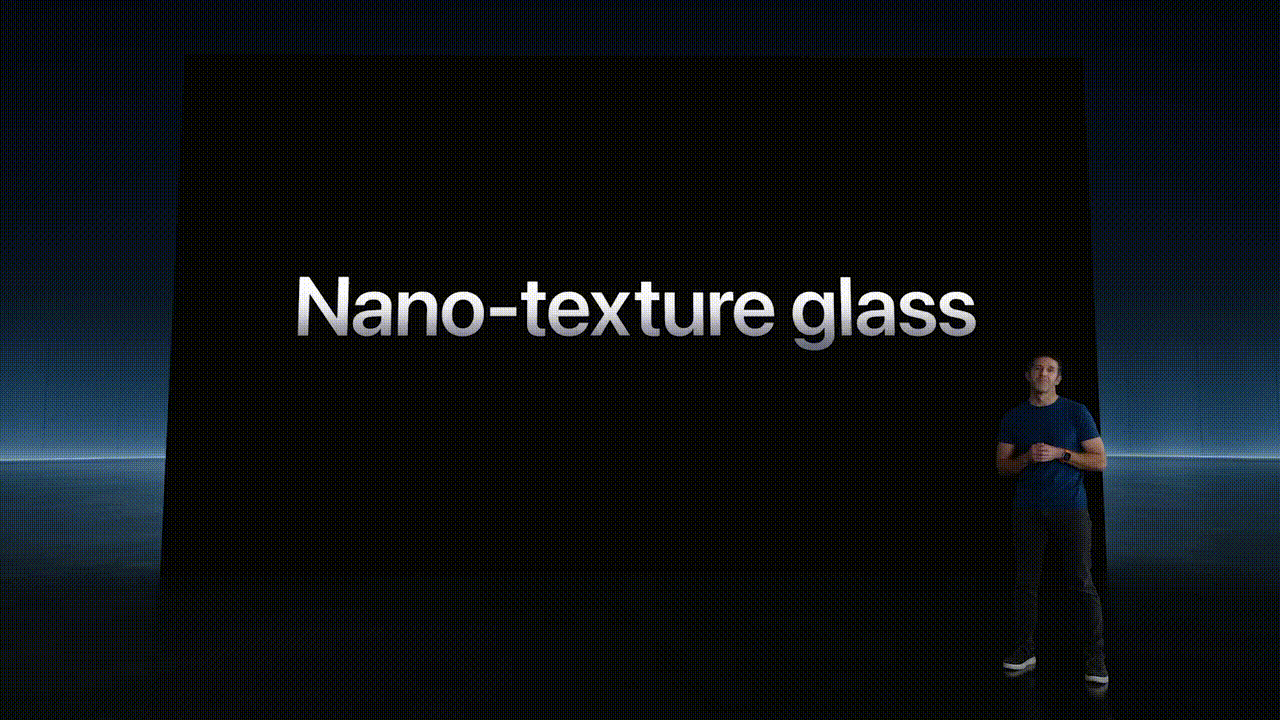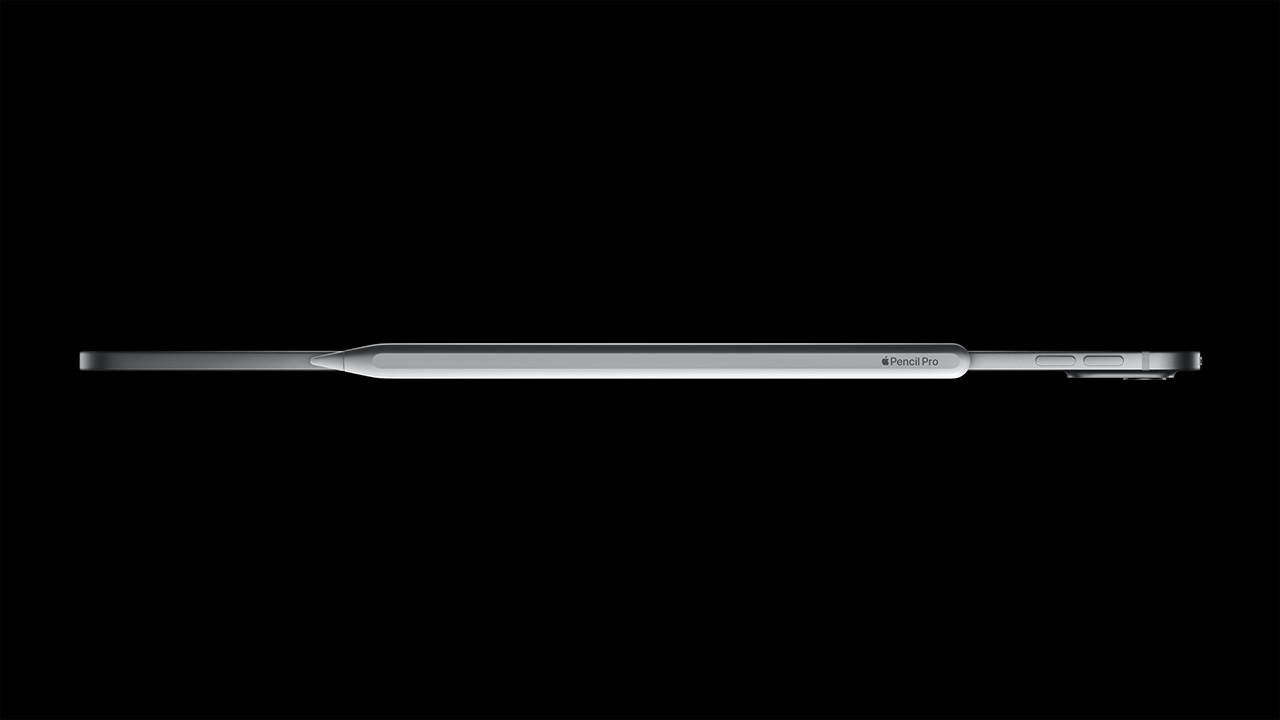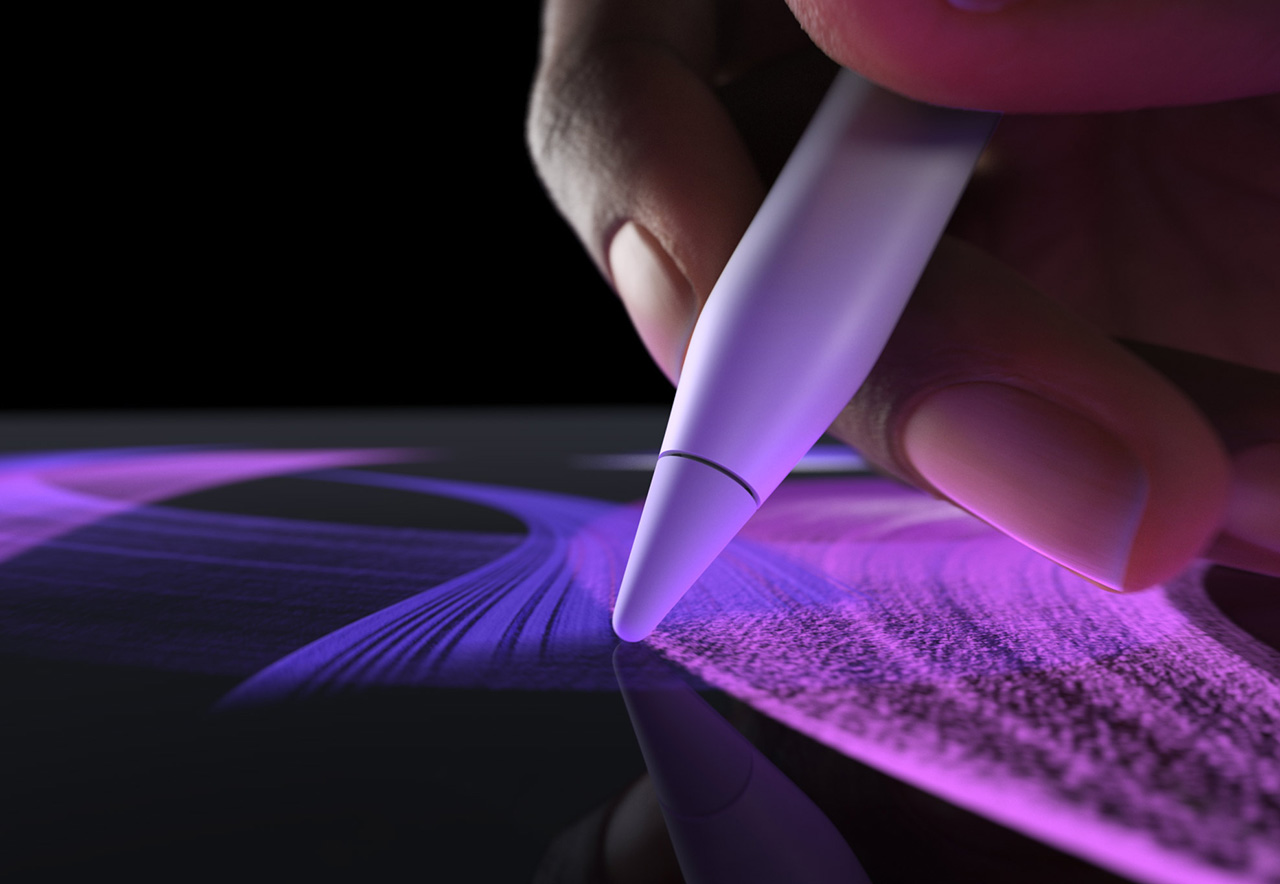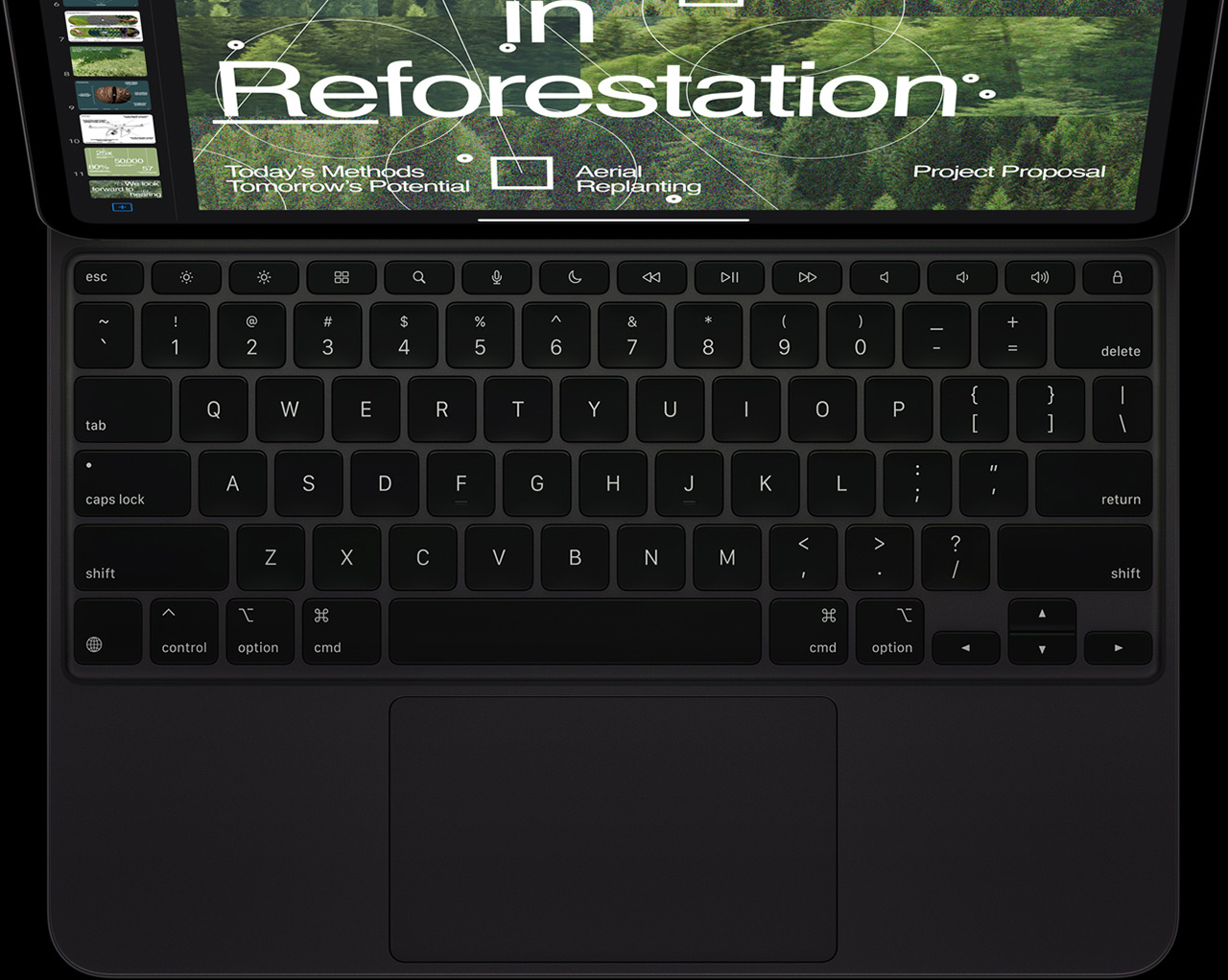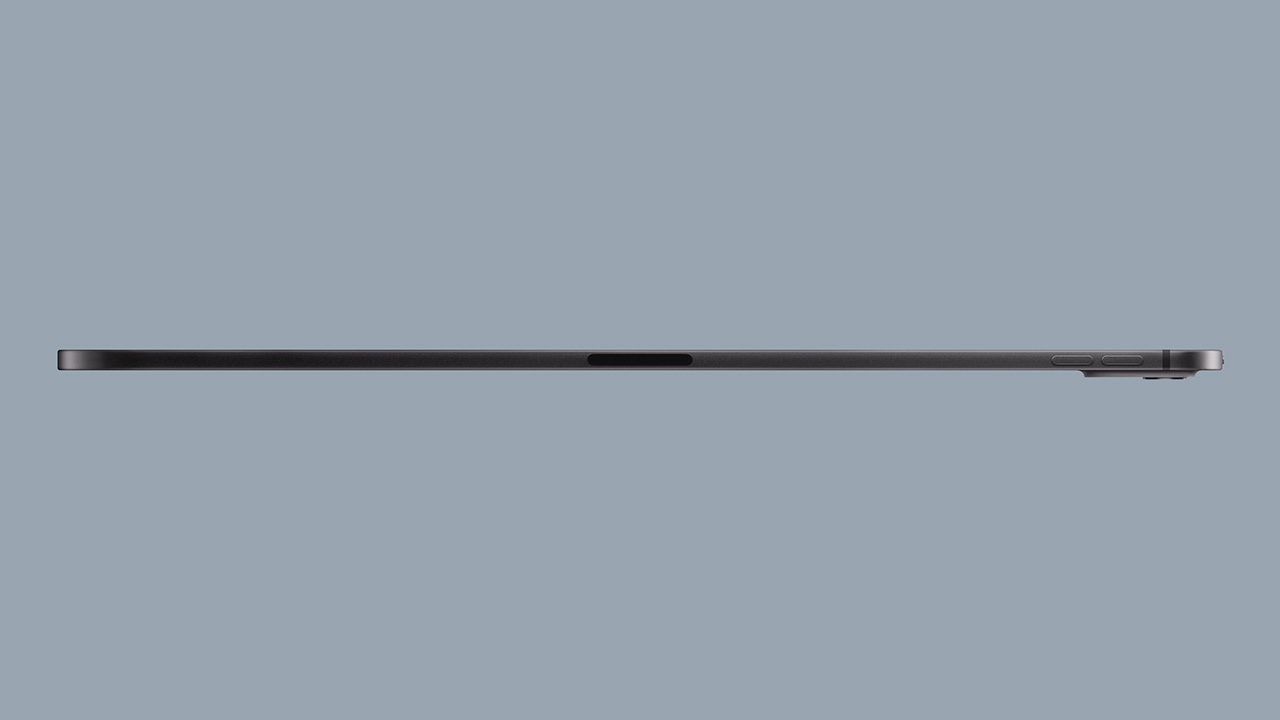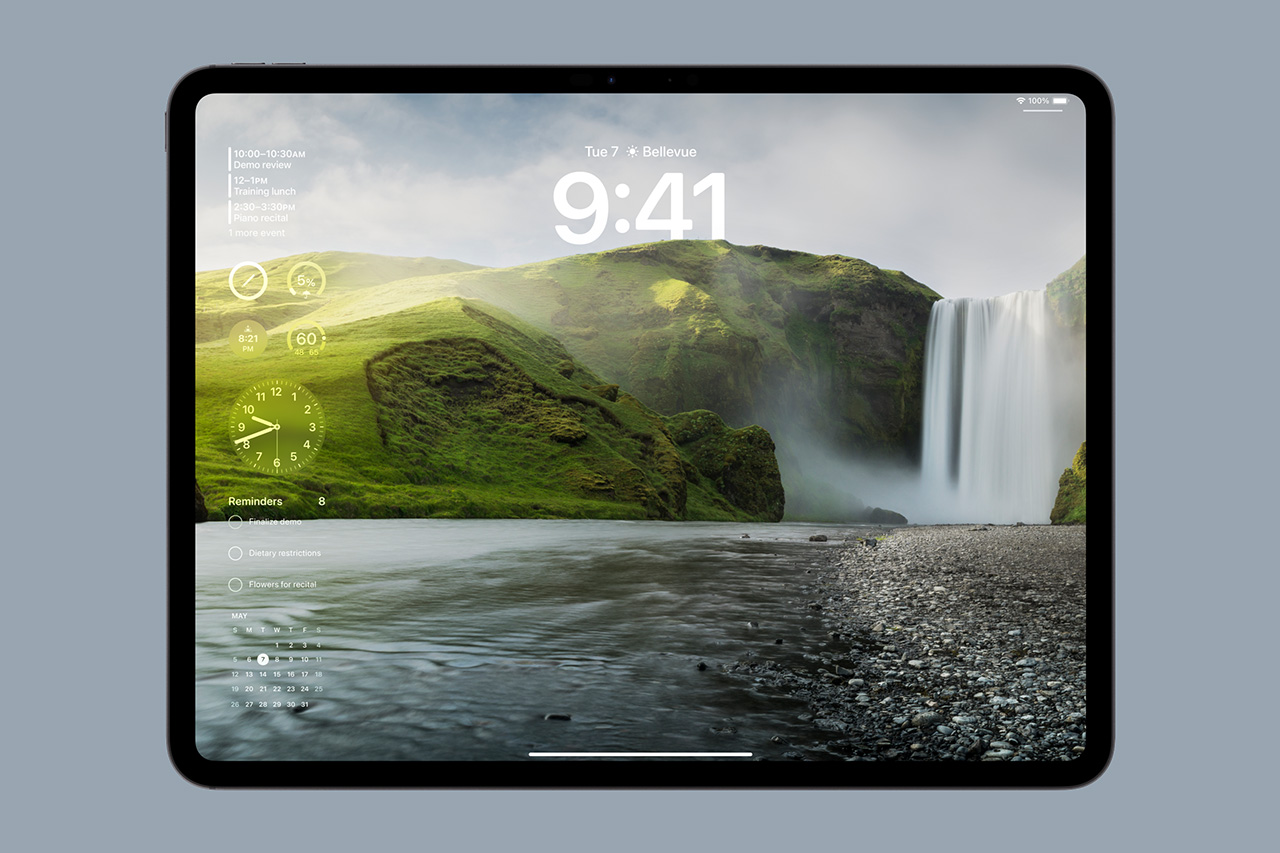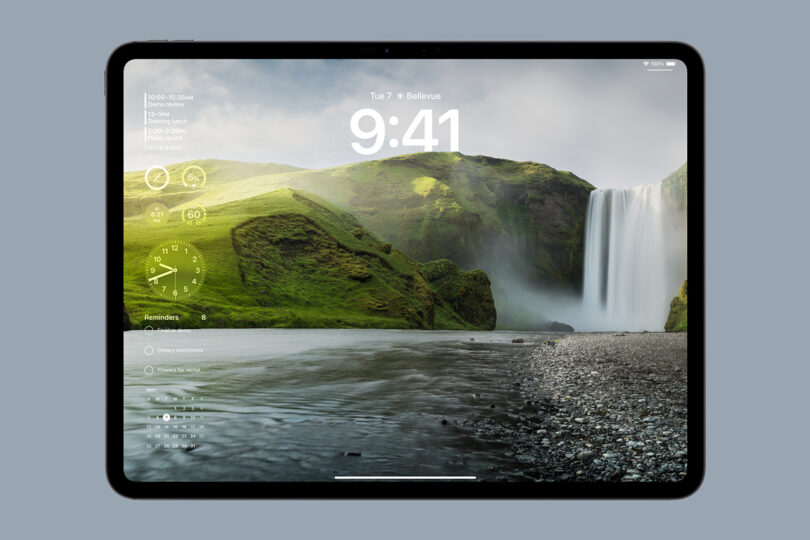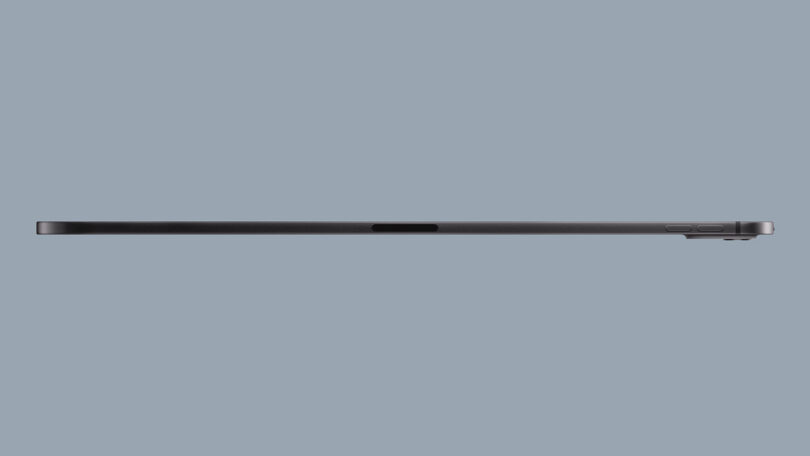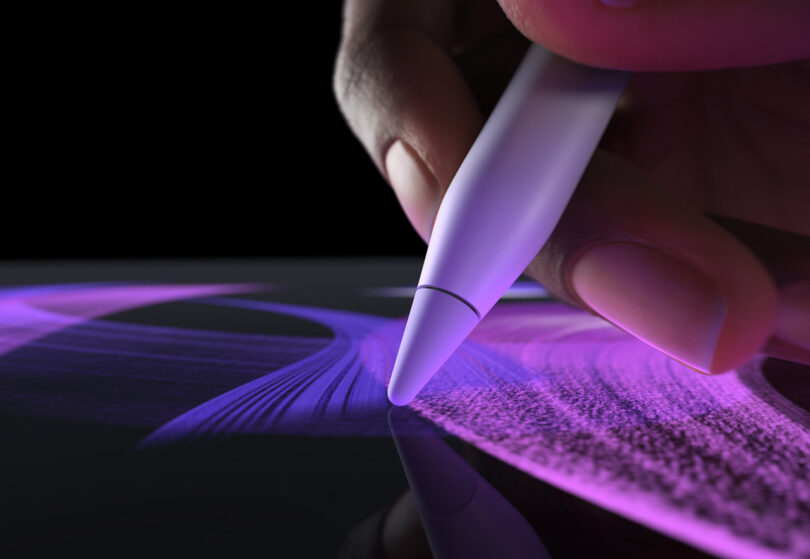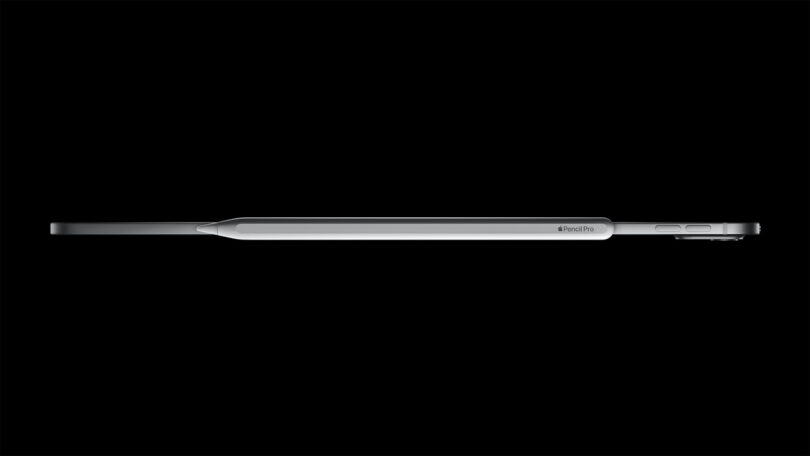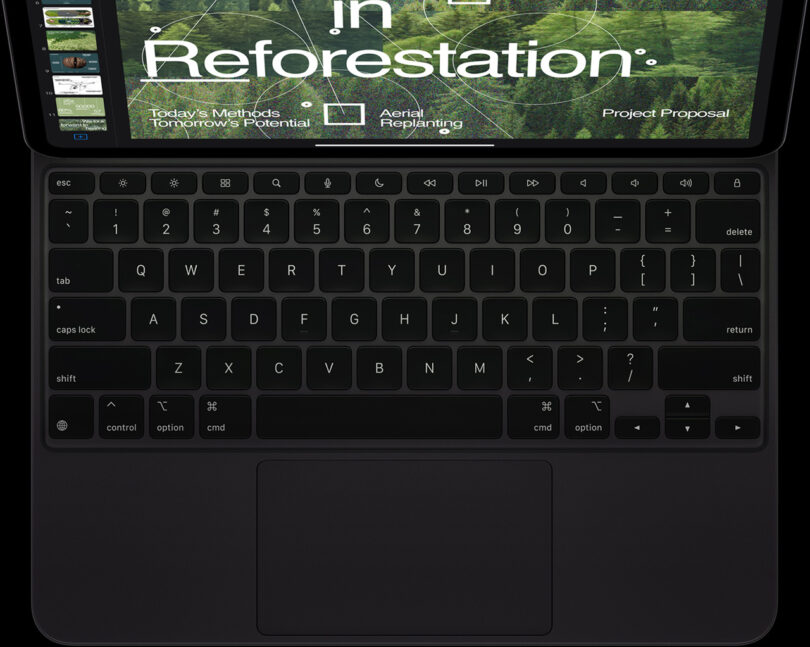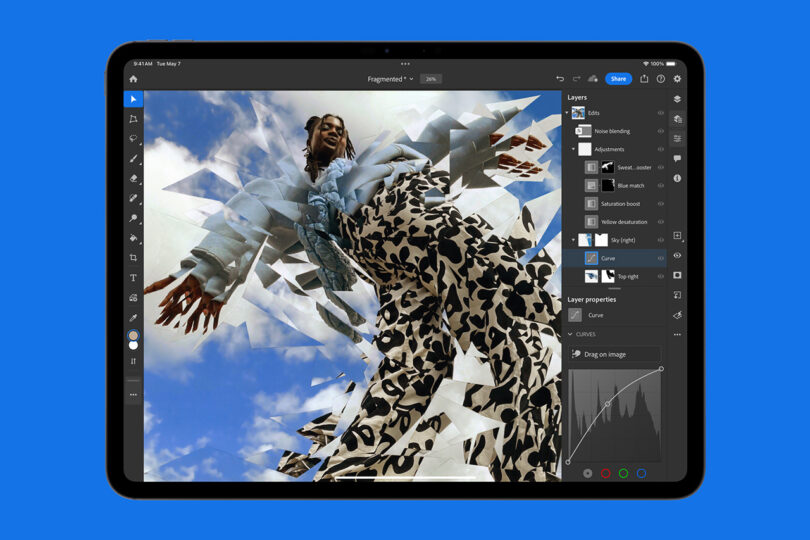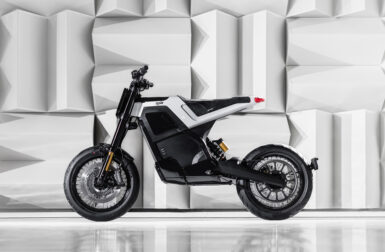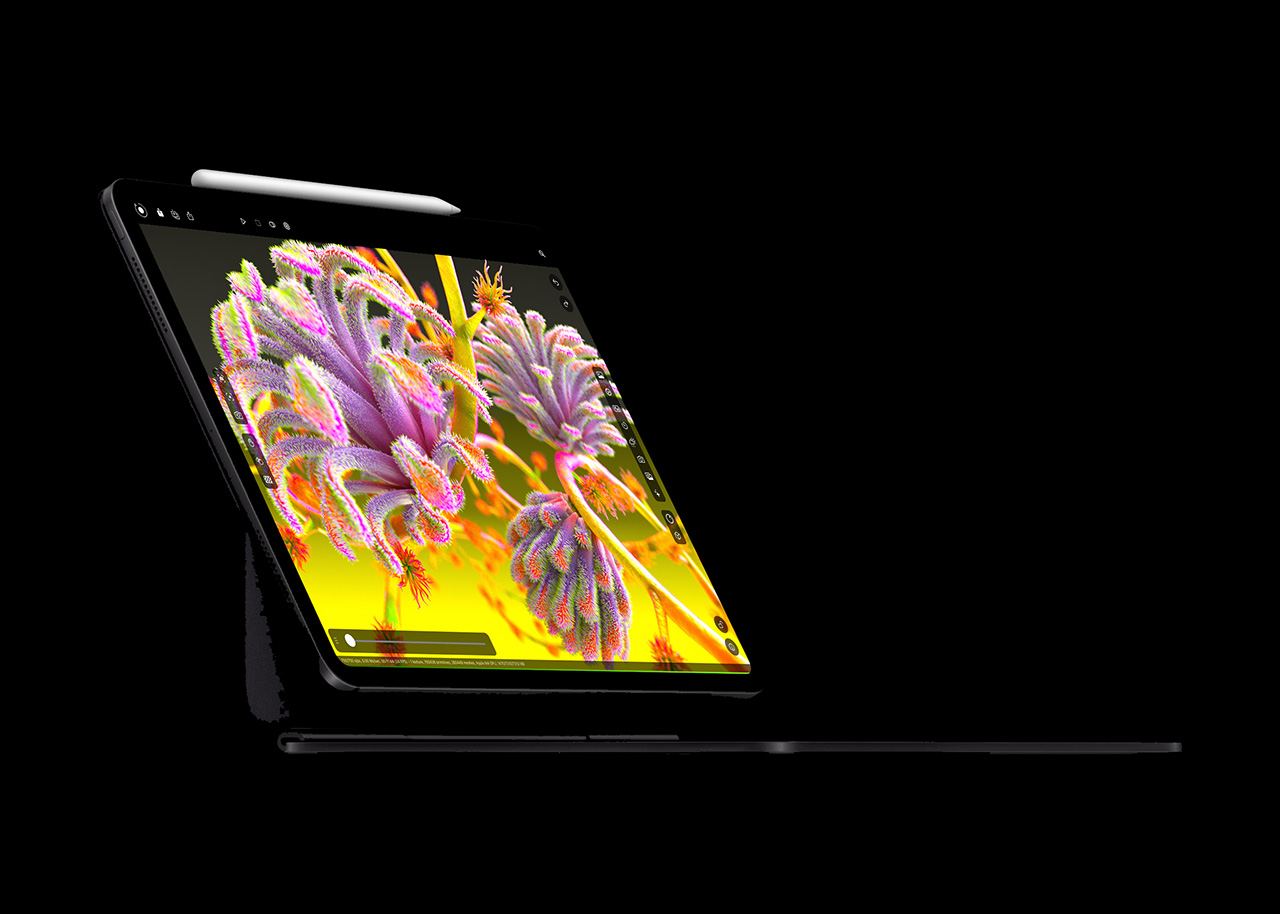
Apple’s connection with the creative set was established long before the development of the first Apple iPad. But in many ways the iPad represents the culmination of the brand’s decades long efforts to merge technology with intuitive experiences shaped by the habits, workflow, and proclivities of artists and designers – a device anyone can pick up and intuit its purpose with the same effect as a pencil and a blank sheet of paper. Even so, it took an iteration or two before the iPad hit full stride and began to fulfill its potential, offering something not a laptop nor a smartphone can. The iPad’s purpose was clarified as app developers found ways to capitalize upon the possibilities of a touchscreen computer.
The latest iteration of the iPad Pro is the most realized example of this vision. With significant enhancements in both hardware and software, the new flagship device takes the “glass as a sheet of paper” metaphor to unprecedented levels thanks to an updated OLED screen, impressively thinner and lighter design, powerful new M4 chip, and new Apple Pencil Pro and Magic Keyboard that are now practically essential add-ons.
Recently, Design Milk had the opportunity to chat with Molly Anderson (Industrial Design), Steve Lemay (Human Interface Design), and Scott Brodrick (Product Marketing) via video call to discuss some of the design thinking and details behind the new iPad Pro, Pencil Pro, and Magic Keyboard.
Design Philosophy and Evolution
The design philosophy behind the iPad Pro has always been to create the digital equivalent of a sheet of paper, a device that almost disappears during use. According to Molly Anderson, Apple industrial designer, the new iPad Pro represents a leap versus a hop in delivering this experience.
“It’s really the closest expression of that original idea,” said Anderson. “It’s the thinnest iPad that we’ve ever made. It’s also the thinnest Apple product we’ve ever made, which is really a huge feat. On top of that, it’s incredibly light… 25% lighter than the previous generation.”
Apple is now offering a new nano-texture for the iPad Pro. Like the Studio Display option, the application reduces reflections and diffuses light, a texture realized through a two-step blasting and etching process, resulting in a surface with improved visibility and reduced glare, and also one that mimics the tactile sensation of different types of paper.
When asked whether the nano-texture qualifies as a repeatable pattern or a random texture, Anderson clarified: “It’s not random. It’s very, very precisely controlled. It’s actually a series of very tiny micro craters. So it’s not spiky, but a refined surface texture that is both architected to be good in terms of reducing glare and light reflections, but different from the Studio Display.”
Anderson notes the nano-texture required hundreds of iterations in development to attain the high degree of optical performance, color accuracy, and desired tactile sensation – a process complicated by the fact the iPad can be held in portrait and landscape mode.
“It was an incredibly difficult challenge,” said Scott Brodrick. “Not only do we have to accommodate for the fact the [iPad] can be held in any number of ways, but it also can be touched and be used in combination with Apple Pencil. The teams refined that process for all of those eventualities, which is really difficult.”
iPad Pro, Pencil Pro, Magic Keyboard: Designed as a Single System
The iPad Pro was not mapped as an island unto itself. As aforementioned, the new iPads are joined by a new Pencil Pro and Magic Keyboard, a trio described by the team as essentially an ecosystem.
Upon cursory inspection the new Apple Pencil Pro does not look at all different from its predecessor. A sculpted smooth matte surface with single flat-top facet runs across the entire length of the barrel allowing for an ergonomic grip. That same section offers an area to magnetically attach the Pencil to the iPad Pro when not in use.
In use the new Pencil Pro reveals moments of “delight” in subtle fashion, evocative of the variable sensorial feedback of working with real world tools. An omnidirectional pressure sensor enables access to various functions with just a tap or roll. A squeeze conjures tool options to appear in immediate vicinity, making selecting tools a quick switch. The integration of a haptic engine adds tactile feedback traveling along the entire length of the pencil, with a gyroscope identifying the Pencil’s rotational orientation. “This is great because not all tools are perfectly round,” explained Human Interface Designer, Steve Lemay. “Some tools like chiseled tip pens or fan brushes have a distinct angle to them.” In use, the device operates as the equivalent of supercharged keyboard shortcuts; squeezing, onto muscle memory with minimal practice.
We’re not trying to replace these analog tools that we all grew up with and love. We’re all painters, artists, and illustrators and things. What we’re trying to do, in addition to empower people to create on the iPad, is to bring some of the joy of those analog experiences to the digital world.
-Steve Lemay, Apple Human Interface Design
Lemay also brings to attention a subtle if wholly unnecessary detail that adds to the perception the iPad is just yet another artistic tool like any other: a visible digital shadow. “It’s one of my favorite moments in the whole thing. It serves two functions: It offers feedback about where you are, the orientation, and a pre-estimate of where the mark is going to be before you make it.”
The Magic Keyboard also sees significant improvements, including a blasted aluminum design resulting in a 10% lighter peripheral. The new haptic trackpad does deliver a more convincing touch akin to a MacBook; similarly improved rigidity across the entire keyboard delivers the feel and sound without the compromised sensation of its predecessor.
But Does it Bend?
Of course, we’d be remiss if we didn’t inquire about the iPad Pro’s thin form factor and concerns about bending the 12.9-inch device.
Anderson states: “You can think about it as a kind of a bucket, with an edge back, back face, and a wall of metal around the side. We did a lot of work to ensure that there was a lot of continuity and refinement in the width, meaning that the structure is evenly distributed all the way around, eliminating any weak point.”
The device’s tensile durability is further strengthened by multiple layers of components stacked together. Anderson reveals a great deal of pride about the team’s obsession over details invisible to its user.
“The thing that’s maybe the most exciting is a new redesign of an internal component that’s actually part of the structural part of the [main logic board],” noted Anderson. “We’ve designed it almost like a spine, radiating out so it’s supporting the enclosure like a structural rib… an incredibly beautiful kind of structural backbone which makes it rigid and also distributes the thermals. It has this lovely duality of doing multiple things while being this incredibly elegant component inside of the product.”
“It’s really beautiful.”
For more information, visit apple.com.
